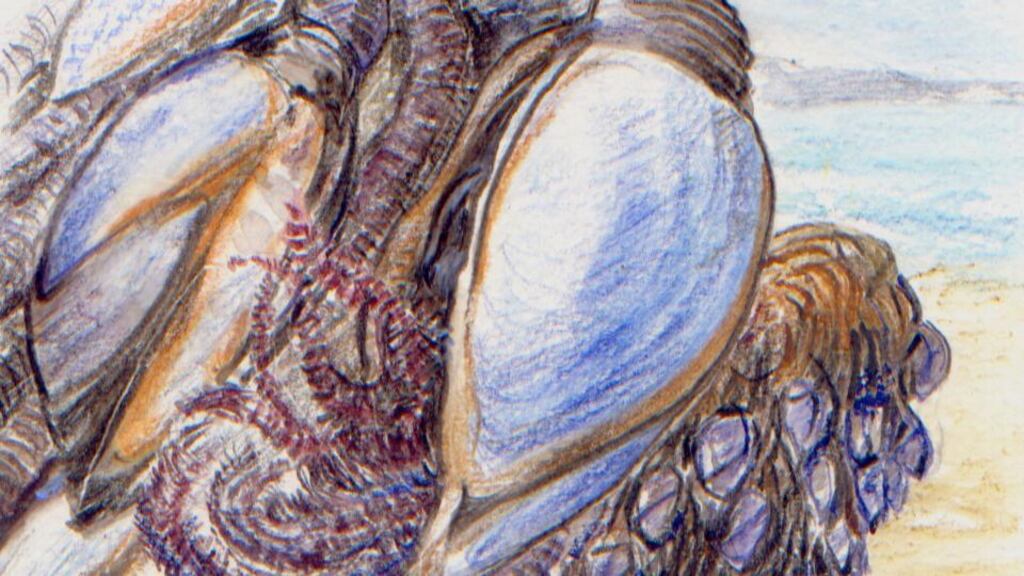The BBC's teatime quiz show Pointless, which rewards its competitors for the most "obscure" answers to an eclectic range of questions, reminds me how little I seem to share in the database of British – and, indeed, of Irish – general knowledge.
Quite ordinary-looking people can rustle up the names of foreign footballers, Formula 1 racing drivers, obsolete pop singers or horror-film directors that nobody else has thought of, this to wild applause and even a boost to the prize money. At the same time they may not know a song thrush when they see one or be able to name many of the more obscure whales. Not that either would come up often enough to give me much of a chance.
It’s hard to think back into the times when few people felt they knew anything very much and when most knowledge of the natural world, in particular, was still local supposition, threaded with pagan mythology and magic and auguries of good and bad luck. Enough of the planet was still impossibly distant and mysterious enough, even to medieval scholars, to find room for dragons, unicorns and mermaids.
So I like it when, even in the information age, a walk on a western shore can wake some of the same kind of wonder and puzzlement that people must have felt those centuries ago. Even knowing what it had to be – from books – did not lessen the fascination of my own first encounters with Lepas anatifera, the gooseneck barnacle, clustered thickly on drift logs, fish boxes or errant West Indian buoys. A seaborne colony can cover a washed-up log like a thousand-headed Hydra; its white beaks of shells, tipping leathery tubes that may reach 20cm, protrude filaments like curling feathers, and breathe out the deepest scent of the sea.
Their mystery is quite a frequent prompt to Eye on Nature. A Co Galway reader, Simon Tobin, videoed his young boys kneeling beside a glistening mass of them on a baulk of timber on a Sligo shore. He described the unfamiliar creatures quite accurately – “obviously feeding by extending brown tentacle legs to catch whatever they could in the water and drawing them in, closing like an anemone”.
For some early naturalists, in an age of prized imaginations, the beak-like shells and feathery appendages, on long, curving necks, suggested an answer to one of the most challenging mysteries of wildlife: how could so many birds, such as geese, disappear all winter and reappear in spring?
The Welsh priest Giraldus Cambrensis, exploring 12th-century Ireland for Topographia Hiberniae, saw a solution, at least for geese, in an annual hatching from the ocean-drifting colonies of these shellfish.
Bird-like creatures
“They take their food and nourishment from the juice of wood and water during their mysterious and remarkable generation,” he wrote. “I myself have seen many times with mine own eyes more than a thousand of the small, bird-like creatures hanging from a single log upon the sea-shore.”
His theory was still going strong in the 17th century, when the botanist John Gerard examined the stalked barnacles on a tree trunk he found washed up near Dover – "which, after I had opened . . . I found living things that were very naked, in shape like a birde; in others, the bird covered with soft downe, the shell halfe open, and the bird readie to fall out, which no doubt were the foules called barnacles . . ." From such conjectures sprang the name of Ireland's migrant barnacle goose.
No such fancies, obviously, attended whoever harvested the great crop of barnacles from the log at Rosses Point, between one day and the next. My correspondent suggested they were “all eaten by dogs, or maybe wildlife”. But I suspect the eager joy of a beachcomber familiar with the Iberian crustacean cuisine.
The goose-necked barnacle is a warm-water creature, drifting our way from the subtropical Atlantic. On Portuguese coasts a close-related species, Mitella pollicipes, growing on submerged rocks, is harvested as a delicacy at the lowest of spring tides. Indeed, demand is so great that its fishers now need to dive, to wrench them from deeper moorings.
For this I am obliged to Alan Davidson's splendid book North Atlantic Seafood, in which he refers to the barnacles' shells, rather oddly, as hoofs. "What one eats," he writes, " is, so to speak, the 'inner tube'. Pinch the outer skin near the hoofs and prise it off with your fingernails, revealing a stalk-like protuberance within, and bite this off entire. Eating the barncles raw is perfectly possible, but those which are offered in bars and restaurants have been cooked briefly and I think that they are better thus. I first ate them as a breakfast in a Lisbon seafood bar . . . and the exquisitely strong taste of the sea was, to use a cliche with accuracy, a real revelation."
Next time, perhaps.












